#World History Encyclopedia
Text

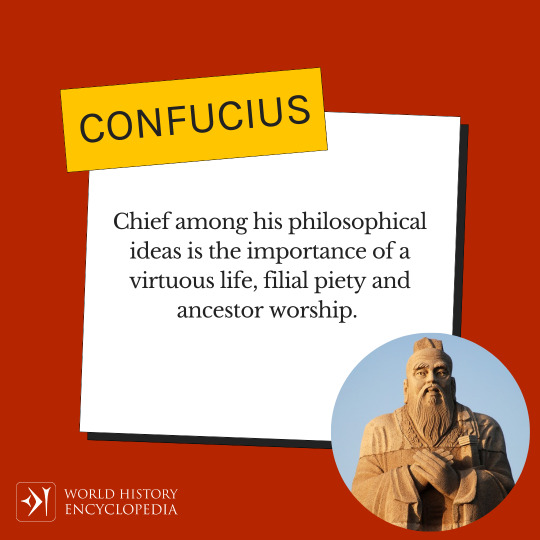

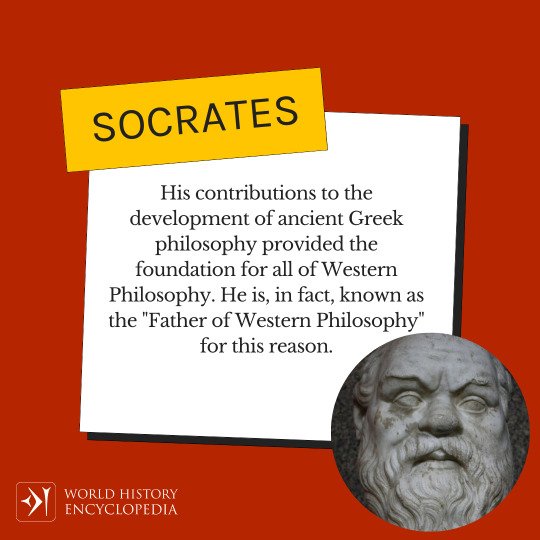

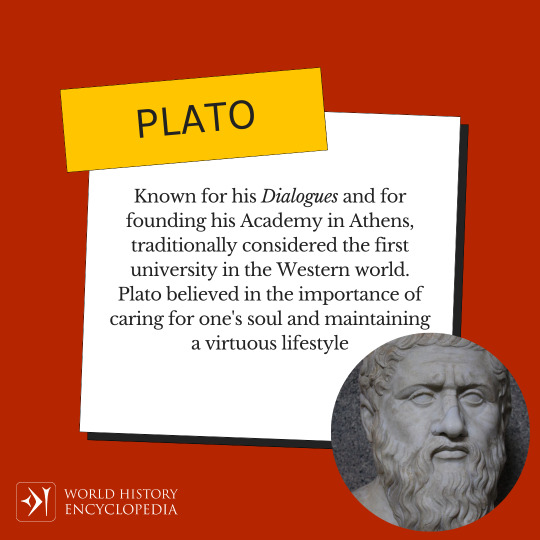
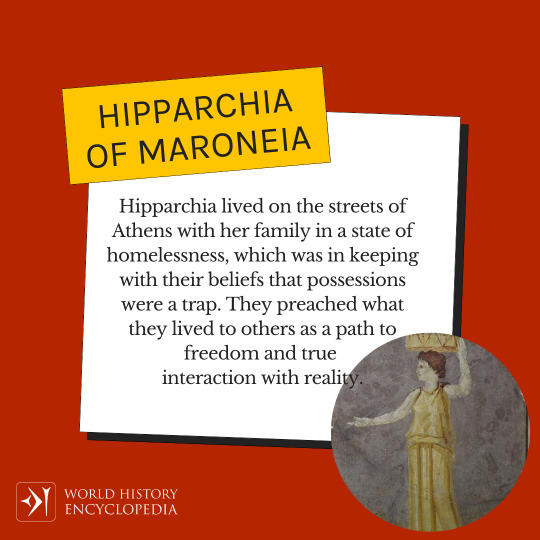
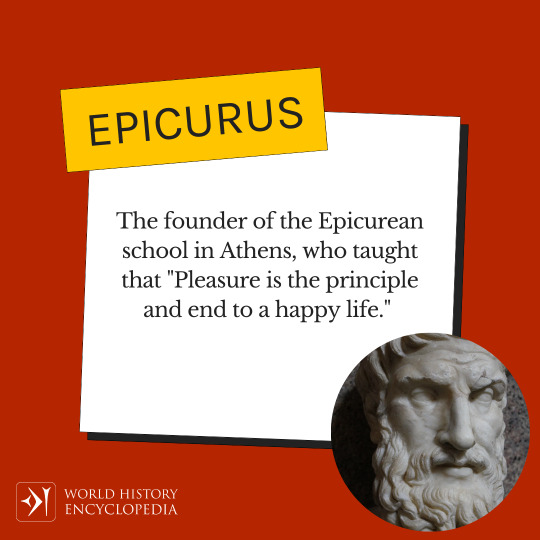

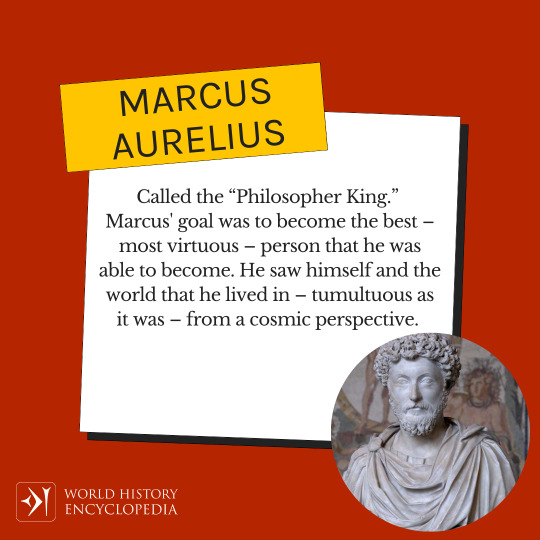
TODAY is World Philosophy Day!
418 notes
·
View notes
Link
A reminder: never use anything from this shoddy site. Every single entry here is wrong! Here are some examples:
Aya was popular in the Old Babylonian period, Sherida is obscure, not the other way around
Amurru was not a "storm god of the Amorite people," he was not an Amorite god at all (see Beaulieu's study for details)
Ashnan is Akkadian, the Sumerian grain goddess was called Ezina
Ashur was not called Anshar in Akkadian, the name Anshar was used as a logogram to designate Ashur as superior to Marduk in neo-Assyrian state propaganda (discussed in virtually every recent study of Ashur)
Bel was Marduk's title, not his brother
I do not think the Gugalanna = Bull of Heaven equation is in the vogue today, A. R. George doesn't even bother to bring it up in his extensive commentary on all known versions of Gilgamesh
the god of Umma, portrayed in Inanna's Descent as her servant and occasionally as the son of Inanna of Zabalam (who is not the same deity as Inanna of Uruk) is named Shara, not "Cara"
Dagan was not a weather god
Enkidu was rarely, if ever regarded as a god (restoration of An = Anum placing him alongside Gilgamesh has been questioned, see discussion in George's Gilgamesh commentary from 2003; accepted by most Reallexikon contributors though iirc), and he definitely was not a "god of the forests and the wild"
Enlil was not "absorbed into Marduk" and especially not during the reign of Hammurabi, Marduk's rise didn't happen before the late second or early first millennium BCE and even then, Enlil continued to be worshiped, especially in "conservative" Nippur and to a smaller degree Uruk
"Ereshkigal was an important and much feared goddess whose consort was the Bull of Heaven until he was killed by Enkidu" is basically crossover fanfiction, also Ereshkigal's cult had a very limited scope according to Frans Wiggermann and other authors
Gibil was a fire god and not... whatever mr. Joshua J. Mark made him into
Bau was a separate goddess from Gula and was not conflated with her, also Ninisina and Ninkarrak are attested as medicine goddesses before Gula, while Bau only acquired such character through secondary developments
saying "Inanna was known to Assyrians as Ishtar" is technically not incorrect but seems to indicate mr. Mark isn't exactly aware how labels like "Akkadian," "Assyrian," "Babylonian" work;
asserting that Inanna's character was not sexualized before the Babylonians did it would indicate complete unfamiliarity with Sumerian poetry
Kabta was a star deity, not a builder deity
Kulitta was not a "Babylonian" goddess but one half of the inseparable Hurrian pair Ninatta and Kulitta, who obviously have nothing to do with Dumuzi
the term "kulullu" specifically designates a "merman" type hybrid creature, and not all mythical beings living in rivers, and it is not exclusively Assyrian
as far as I am aware, Mammitum did not "simply made up the fates of humans on a whim" (the mention of her role as a wife of Nergal is oddly absent, too), and it is not universally agreed that her name has anything to do with fate, a connection with frost has also been proposed
"Mylitta" is a garbled spelling of Mullissu (a name of Ninlil conventionally employed in scholarship to discuss Ninlil as spouse of Ashur in 1st millennium BCE), who was not a "fertility goddess" (a basically meaningless term)
Nanaya is the correct form, not Nana, and she was not a "virgin mother goddess," she was a goddess associated with a term which roughly corresponds to sex-appeal and her relation to Inanna is much more complex than Mark claims
"Nedu" and "Neti" are both outdated readings of the name of the same god, Bitu
the spelling "Nidaba" is no longer accepted
Ningal was not a "fertility goddess" or a solar goddess
Ningishzida was invariably a son of Ninazu and Ningirida, not of Anu or Ereshkigal.
Nnhursag's cult center Kesh did not decline during the reign of Hammurabi and it's laughable to blame a single guy for a complex multi-century process in which many southern deities, both male (Shara, Ningirsu) and female (Nanshe, Ninhursag), declined as their cities were abandoned
Ninshubur's name refers to Subartu, which was in the north, not in the east (she's not named Ningutium or Ninelam), also mr. Mark seems to have trouble with the š
it's spelled "Papsukkal," not "Papsukkel"
Nisaba was never described as Nabu's wife
Sherida was, as far as I am aware, never a big deal and especially not one of the primary deitites (the oldest attested goddesses are Inanna of Uruk, Inanna of Zabalam, Ezina and Nisaba; Sherida does not show up in the Early Dynastic zami hymns to city deities, only in god lists
Tiamat is a one off antagonist from a single relatively late myth, not a "primordial mother goddess of Mesopotamia"
Uttu was usually not associated with spiders
Z/Sarpanit has no role other than being the wife of Marduk and she is hardly "early"
"Zaltu" (it's actually Saltu) is an antagonist in a single myth, not a goddess of anything specific.
There is more but I just picked what seemed glaring to me, and what shows best that mr. Mark does not know what he writes about. His Shaushka article is even worse, somehow!
74 notes
·
View notes
Text

Banded rubber frog (Phrynomantis bifasciatus)
By: Natural History Photographic Archive
From: The Complete Encyclopedia of the Animal World
1980
#narrow-mouthed frog#frog#amphibian#1980#1980s#Natural History Photographic Archive#The Complete Encyclopedia of the Animal World (1980)
140 notes
·
View notes
Text
Write 8000 words of just lore notes today lol
#rant#mejo writing#i am like. ah why dont i write the story world terms down so theres a nice reference guide on the words i use#then im like. oh how about i summarize the terms. then what if i also add in-story historical and groups context#and now its like each term is a lil 3 page Encyclopedia history ref sjsjej#sadly i will not get to use all this in actual story#but i know in my heart my oc Celest would habe all tjese fucking notes in his journals#as the resident Historian Nosy Spy Ambassador and Monsters Biologist#so maybe he'd lore dump in his pov story. still debating that
1 note
·
View note
Text
Palestine Masterlist
Introduction to Palestine:
Decolonize Palestine:
Palestine 101
Rainbow washing
Frequently asked questions
Myths
IMEU (Institute for Middle East Understanding):
Quick Facts - The Palestinian Nakba
The Nakba and Palestinian Refugees
The Gaza Strip
The Palestinian catastrophe (Al-Nakba)
Al-Nakba (documentary)
The Hundred Years’ War on Palestine: A History of Settler Colonialism and Resistance, 1917-2017 (book)
The Ethnic Cleansing of Palestine (book)
Nakba Day: What happened in Palestine in 1948? (Article)
The Nakba did not start or end in 1948 (Article)
Donations and charities:
Al-Shabaka
Electronic Intifada
Adalah Justice Project
IMEU Fundraiser
Medical Aid for Palestinians
Palestine Children’s Relief Fund
Addameer
Muslim Aid
Palestine Red Crescent
Gaza Mutual Aid Patreon
Books:
A New Critical Approach to the History of Palestine
The Idea of Israel: A History of Power and Knowledge
Hidden Histories: Palestine and the Eastern Mediterranean
The Balfour Declaration: Empire, the Mandate and Resistance in Palestine
Queer Palestine and the Empire of Critique
From Haven to Conquest: Readings in Zionism and the Palestine Problem until 1948
Captive Revolution - Palestinian Women's Anti-Colonial Struggle within the Israeli Prison System
Palestine: A Four Thousand Year History
Except for Palestine: The Limits of Progressive Politics
Before Their Diaspora: A Photographic History of The Palestinians 1876-1948
The Battle for Justice in Palestine Paperback
Uncivil Rites: Palestine and the Limits of Academic Freedom
Palestine Rising: How I survived the 1948 Deir Yasin Massacre
The Transformation of Palestine: Essays on the Origin and Development of the Arab-Israeli Conflict
A Land Without a People: Israel, Transfer, and the Palestinians 1949-1996
The Iron Cage: The Story of the Palestinian Struggle for Statehood
A History of Modern Palestine: One Land, Two Peoples
Where Now for Palestine?: The Demise of the Two-State Solution
Terrorist Assemblages - Homonationalism in Queer Times
Militarization and Violence against Women in Conflict Zones in the Middle East
The one-state solution: A breakthrough for peace in the Israeli-Palestinian deadlock
The Persistence of the Palestinian Question: Essays on Zionism and the Palestinians
Fateful Triangle: The United States, Israel and the Palestinians
The False Prophets of Peace: Liberal Zionism and the Struggle for Palestine
Ten myths about Israel
Blaming the Victims: Spurious Scholarship and the Palestinian Question
Israel and its Palestinian Citizens - Ethnic Privileges in the Jewish State
Palestinians in Israel: Segregation, Discrimination and Democracy
Greater than the Sum of Our Parts: Feminism, Inter/Nationalism, and Palestine
Palestine Hijacked
Palestinian Culture:
Mountain against the Sea: Essays on Palestinian Society and Culture
Palestinian Costume
Traditional Palestinian Costume: Origins and Evolution
Tatreez & Tea: Embroidery and Storytelling in the Palestinian Diaspora
Embroidering Identities: A Century of Palestinian Clothing (Oriental Institute Museum Publications)
The Palestinian Table (Authentic Palestinian Recipes)
Falastin: A Cookbook
Palestine on a Plate: Memories from My Mother's Kitchen
Palestinian Social Customs and Traditions
Palestinian Culture before the Nakba
Tatreez & Tea (Website)
The Traditional Clothing of Palestine
The Palestinian thobe: A creative expression of national identity
Embroidering Identities:A Century of Palestinian Clothing
Palestine Traditional Costumes
Palestine Family
Palestinian Costume
Encyclopedia of World Dress and Fashion, v5: Volume 5: Central and Southwest Asia
Tent Work in Palestine: A Record of Discovery and Adventure
Documentaries, Films, and Video Essays:
Jenin, Jenin
Born in Gaza
GAZA
Wedding in Galilee
Omar
5 Broken Cameras
OBAIDA
Indigeneity, Indigenous Liberation, and Settler Colonialism (not entirely about Palestine, but an important watch for indigenous struggles worldwide - including Palestine)
Edward Said - Reflections on Exile and Other Essays
Palestine Remix:
AL NAKBA
Gaza Lives On
Gaza we are coming
Lost cities of Palestine
Stories from the Intifada
Last Shepherds of the Valley
Voices from Gaza
Muhammad Smiry
Najla Shawa
Nour Naim
Wael Al dahdouh
Motaz Azaiza
Ghassan Abu Sitta
Refaat Alareer (murdered by Israel - 12/7/2023. Inna lillahi wa inna ilayhi raji'un)
Plestia Alaqad
Bisan Owda
Ebrahem Ateef
Mohammed Zaanoun
Doaa Mohammad
Hind Khoudary
Palestinian Voices, Organizations, and News
Boycott Divest and Sanction (BDS)
Defense for Children in Palestine
Palestine Legal
Palestine Action
Palestine Action US
United Nations relief and works for Palestinian refugees in the Middle East (UNRWA)
National Students for Justice in Palestine (SJP)
Times of Gaza
Middle East Eye
Middle East Monitor
Mohammed El-Kurd
Muna El-Kurd
Electronic Intifada
Dr. Yara Hawari
Mariam Barghouti
Omar Ghraieb
Steven Salaita
Noura Erakat
The Palestinian Museum N.G.
Palestine Museum US
Artists for Palestine UK
Eye on Palestine
#Palestine#free palestine#palestine masterlist#apartheid#settler colonialism#links#donation post#BDS#Middle East#Palestinian liberation#palestinian culture#long post#resources#dcip#gaza
49K notes
·
View notes
Text

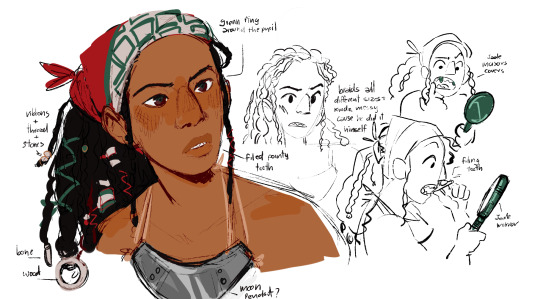
Redid my Maya Knux gijinka! Now with notes and sources on how I did the design (It's kinda long, around 2k words jsyk):
The hairstyle:
Knux has pretty long spikes, so I knew I wanted to give him long hair! Braids or dreadlocks look pretty fitting, so I tried looking for references of hairstyles to see if any fit what I was looking for:
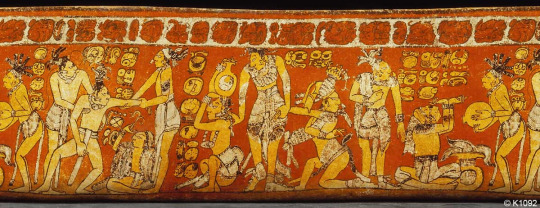
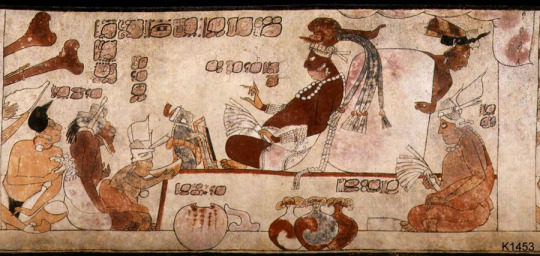

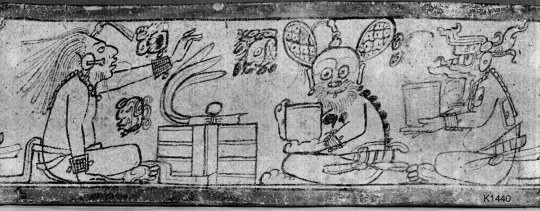
Source: Mayavase.com (Photograph by Justin Kerr)
http://research.mayavase.com/kerrmaya_hires.php?vase=1092
http://research.mayavase.com/kerrmaya_hires.php?vase=1453
http://research.mayavase.com/kerrmaya_hires.php?vase=694
http://research.mayavase.com/kerrmaya_hires.php?vase=1340
While all the vases show a variety of interesting hairstyles, I particularly loved the look of the braids in K694 (the third picture). Being tied upwards wouldn’t really fit Knux however, so something like the man in K1340 (fourth pic) with his hair fully down, or the 5th man from left to right in K1092 (first pic) with a cloth holding the hair would be really nice!
I didn’t want to give him a headpiece, if only to not clutter his head, but also I didn’t think it’d fit Knux as a warrior. The ruler’s headpiece in K1453 (second pic) however allows the hair to come off it, and seems to have some dangly adornments on the end of the strands/braids/locks, which I found super pretty. Plus:
“Elite Mayan men and women styled their hair to show off their pointed heads, crafted through the careful head flattening they experienced as children. Women gathered their long hair on top of their heads in flowing ponytails. For special occasions they braided their ponytails and decorated them with ornaments and ribbons. Mayan men grew their hair long but burnt the hair off their foreheads to accentuate their elongated profiles. They would bind their hair into one or many ponytails or tie it in a bundle on top of their head. Mayan slaves had their hair cut short as one visible mark of their inferior status.” p.399
Source: Fashion, costume, and culture: clothing, headwear, body decorations, and footwear through the ages (Sarah Pendergast and Tom Pendergast, Sarah Hermsen as Project Editor), 2003.
https://archive.org/details/fashioncostumecu0000pend/page/n5/mode/2up
Taking all of that! I settled on tight braids with a few adornments made of jade and wood, with a red cloth to keep his hair from his eyes. Almost all of the braids are pulled together into a ponytails, but there are some smaller braids loose.
It’s somewhat of a mixture of styles, combining ornaments of special occasions, with the long hair of elites on a character like Knux. But I kept these ‘contradictory’ aspects of the design to remember that Knux kinda learns about his ancestors on the go, through murals, writings and technology, so I doubt he’d have a great grasp on what he should and shouldn’t wear. I think it adds character as someone who’s trying to figure out himself, his history and his place in the world.
Shoes and Accessories:
For footwear I kept it simple, just turned Knux’s existing shoes into sandals:
“Ancient Aztecs and Mayans of Central America adopted a thick-soled sandal with a protective legging attached at the heel, while the top of the foot and shin remained exposed.” p.135
Source: Encyclopedia of Clothing and Fashion (Valerie Steele), 2005
Although my gut instinct was to cover Knuckles from head to toe in accessories, I also tried to keep it simple like the shoes. He’s a very mobile fellow so he can’t have too much weight or annoying bits flying everywhere and getting in his face. So I kept his moon necklace, like in Fleetway, just adjusted the shape to have a bit more of details:
“The jewelry worn by the Mayan, Aztec and Inca people was rich in variety and quite beautiful. Without metalworking skills, Mayans made jewelry from many materials. Mayan men wore nose ornaments, earplugs and lip plugs made from bone, wood, shells and stones, including jade, topaz, and obsidian. Necklaces, bracelets, anklets and headgear were made with jaguar and crocodile teeth, jaguar claws and feathers.” p.402
Source: Fashion, costume, and culture: clothing, headwear, body decorations, and footwear through the ages (Sarah Pendergast and Tom Pendergast, Sarah Hermsen as Project Editor), 2003.
https://archive.org/details/fashioncostumecu0000pend/page/n5/mode/2up
As stated here, Mayans didn’t have metalwork, so I imagine this is an artifact that his ancestors got from another group of people.
Just a page before they also mention how the Maya people used to file points into their teeth, to make their mouths more appealing. This includes shaping them into pointy teeth, (like the classic shark teeth), but they could also file them into other shapes, like in this picture:

Source: https://www.archaeologynow.org/blog-3/blog-post-title-two-txwxl (I’m pretty sure this isn’t the source of the image, but I couldn’t find an actual source that wasn’t an uncredited blog)
The Maya people are also notorious for their good dentistry, as seen the stone ornaments in the teeth above. I think the filling is something Knux could do on his own, but anything that would involve actual dentistry would be too much. But it’s still interesting to read about!
(Here’s an article named “Mayan Esthetic Dentistry: Using Modern Techniques and Digital Imaging Technologies to Link the Past to the Present” by Yassine Harichane if you want to learn more!)
While a non-permanent version of stones on teeth seemed cool, like Jade incisor-coverings, at the end of the day I don’t think Knuckles is too vain, so I didn’t add that to the design. Although I think he’d definitely try out a bunch of things like this, just to try to understand them.
For additional outfits I gave him a red layered cape and a green huipil! The red cape is just to bring back more red into the design, since I gave him a lot of green. And the huipil is a nod to his poncho in the comics! (Although huipiles are commonly associated with women and girls, I still wanted to give him one, not only to bring up his partial detachment to his ancestors, but also because Knux probably wouldn’t think much about gender in general let’s be honest)

Source: Mayavase.com (Photograph by Justin Kerr)
http://research.mayavase.com/kerrmaya_hires.php?vase=638
Somewhat based the red cape on the 4th man in this picture, from left to right, but I kept it simple, as maybe just some fabric Knux found around the island, nothing too fancy.
For the huipil I wanted to do something more detailed but was having a really hard time coming up with designs. And I didn’t want to straight up plagiarize someone’s else work, so I kept it vague, maybe some day I’ll sit down and give it a more detailed version. I did come across a very nice store/ catalog that sells traditional Maya textiles, and this one was very gorgeous! Highly recommend give this and the other textiles a look!
In the end I made the huipil look vaguely like the ones shown in page 128 of the following book:
“In the Museum collection, costumes that looked very much alike usually turned out to be from villages that shared a language. Among Cakchiquel villages, dialect differences were usually mirrored by costume differences. Working on this principle we were surprised by the striking similarity of style in the huipils of San Antonio Aguas Calientes (fig. 195) and San Martín Jilotepeque (fig. 196). These villages, while both Cakchiquel, spoke very different dialects and were separated geographically (map, below). The similarity of their huipil was so remarkable we felt the need to investigate these two villages more thoroughly and found that a multi-cultural
history probably accounted for these unexpected similarities of style. Huipils from these villages may well illustrate the earliest examples of pan-Maya acculturation after the Conquest.”p. 127
Source: Threads of identity: Maya costume of the 1960s in highland Guatemala (Patricia B. Altman, Caroline D.West), 1992.
https://archive.org/details/threadsofidentit0000altm/page/n7/mode/2up
Lastly on accessories, which I don’t know if it counts as an accessory but I didn’t know where to put it: the body paint. Last time I gave Knux a human design I couldn't find a good resource on Maya people painting their bodies. Every source mentioned and was in consensus that some of the people did paint their bodies, but that was the extent of the info. I wasn’t able to find any patterns or meanings of the body paintings, or even good visual reference for it. But! This time I was able to get a bit more:
“Body painting was a common Maya practice. Classic Period murals and polychrome vases depict warriors covered with red or black paint; sometimes their bodies were striped with red paint. Paint was also used around the eyes and nose to give a fierce expression. In the 16th century, these practices continued. Women also applied red paint to their faces and bodies, but presumably to make themselves look beautiful, not fierce. Small paint jars of red hematite mixed with mica were found in the houses at Cerén, and these may have been for cosmetic use. Unmarried young men painted their bodies black, and so did those who were undergoing periods of ritual purification and fasting. Priests often wore blue body paint. “p. 338
Source: Handbook To Life In The Ancient Maya World Lynn (V. Foster), 2002.
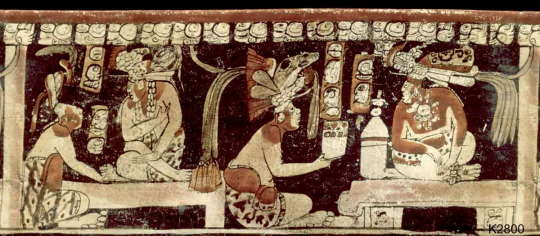
Source: Mayavase.com (Photograph by Justin Kerr)
http://research.mayavase.com/kerrmaya_hires.php?vase=2800
http://research.mayavase.com/kerrmaya_hires.php?vase=2573
http://research.mayavase.com/kerrmaya_hires.php?vase=7996
I of course wanted to give him red paint, and I really liked this design of the red lining the cheeks on the face down to the neckline. However in most of these depictions the red on the body is accompanied by the white face, which I can’t actually tell if the face has white paint, or the body has black paint, like described in the quote before. Either way I chose to only use the red, to keep in line with Knux’s original design.
(It’s worth mentioning that these vases shown depict rulers, as you can see the intricate thrones and altars, which isn’t really fitting with Knux. But again, I want to keep some mismatched aspects into his design, not only warrior-related things.)
The main outfit:
Last but not least, the main outfit. Don’t have much notes on this I’m going to be honest, I just tried to keep in line with descriptions of warriors clothing:
“While some warriors may have been resplendent on the battlefield, the common Maya soldier fought with little clothing other than loincloth and body paint, based on battle scenes in the few Maya murals that remain (see figure 2.9, page 54).” p.147
Source: Handbook To Life In The Ancient Maya World Lynn (V. Foster), 2002.
I considered putting him in a loincloth for accuracy, but tbh I was scared people were going to be weird about it, and so I gave him a skirt with some fabric that emulates the look of a loincloth and some scrap fabric around his waist and limbs! He actually ended pulling up a lot from the dude I mentioned in vase K1092 (the very first ref pic in this post) lol!
And that´s all, hope y’all liked it :P
1K notes
·
View notes
Text
The Giza pyramid complex.
The Giza pyramid complex.
A rocky plateau on the west bank of the Nile River near Al-Jīzah (Giza) in northern Egypt.
Pyramids of Giza, Arabic: Ahrāmāt Al-Jīzah, three 4th-dynasty (c. 2575–c. 2465 bce) pyramids erected on a rocky plateau on the west bank of the Nile River near Al-Jīzah (Giza) in northern Egypt. In ancient times they were included among the Seven Wonders of the World
The Giza Plateau is the location of…

View On WordPress
#Ahrāmāt Al-Jīzah#Ancient history#Antipater of Sidon#discover about the ancient world#Egypt#epigrams#Hellenistic times#History Channel#Nile river#Pyramid of Cheops#Pyramids of Giza#The free online history encyclopedia#The Great Pyramid#The Great Sphinx of Giza#The Pyramid of Khufu#The Seven Wonders of the World
0 notes
Text
The World History Encyclopedia
The World History Encyclopedia
About UsWe are a non-profit organization publishing the world’s most-read history encyclopedia.
Our MissionOur mission is to engage people with cultural heritage and to improve history education worldwide.
Our VisionStudying history helps us gain a more nuanced understanding of the world we live in today. Our knowledge and interpretation of history shape how we define ourselves as nations and…

View On WordPress
0 notes
Text
I truly cannot think of anything more pointless for a fantasy writer to worry about than "Who domesticated wheat in your world?"
I've seen at least two different threads bring this up. It's so pedantic that it's ridiculous. I'll go so far as to say that answering this question will make your story worse. Unless your plot directly hinges upon the agricultural history of your imaginary realm, there is no reason for anyone in the story to know, mention, bring up, or in even the slightest way care about the answer to that question, and absolutely zippo reason for anyone reading it to take time out of their presumably adult life to take even a microsecond to consider it.
Who domesticated wheat in our world? Does it matter? Does not knowing the answer stop you from having a morning slice of toast?
Stop telling people that they need to create thousands of years of worldbuilding before they can include even the simplest details. You're writing a story, not an encyclopedia. This Cinema Sins approach to worldbuilding is joyless and mean-spirited and it actively makes for worse storytelling.
2K notes
·
View notes
Text
Beginner Friendly Witchraft Books
With a plethora of information available, it's essential to find the right resources to guide you through your magical path. Here are some books I would recommend to any beginner that offer a solid foundation into various paths and topics.
Witchery by Juliet Diaz
The book is a mix of personal experiences, practical instruction, and spiritual guidance, making it suitable for both beginners and people with more experience in the craft.
The Crooked Path by Kelden
This book has been an invaluable resource in my personal craft. It explores various aspects of traditional witchcraft, which if you're interested in I would definitely recommend.
Psychic Witch by Matt Auryn
This book is for anyone curious about the unseen world and their own untapped potential.
Green Witchcraft by Paige Vanderbeck
This is a guide to practicing green witchery, harnessing the natural world's magic for growth, healing, and living in harmony with nature.
Witchcraft for Beginners by Lisa Chamberlain
A pretty informative guide to witchcraft with brief but thorough descriptions of different paths.
Cunningham's Encyclopedia of Magical Herbs by Scott Cunningham
A classic book on magickal herbs
Sigil Witchery by Laura Tempest Zakroff
A comprehensive guide to sigil magick, focusing on helping you develop your own powerful sigil magick practice.
The Witch's Altar by Jason Mankey and Laura Tempest Zakroff
The witch's altar history, creation, and magical power to elevate rituals and connect with the sacred.
These are just ones I've personally found helpful when I first got into the craft, if you want any recommendations for specific topics feel free to ask :).
#divination#fyp#grimoire#witchblr#witchcraft#baby witch#broom closet#paganism#witch community#witchcraft 101#book recommendations#witchcraft books
753 notes
·
View notes
Text
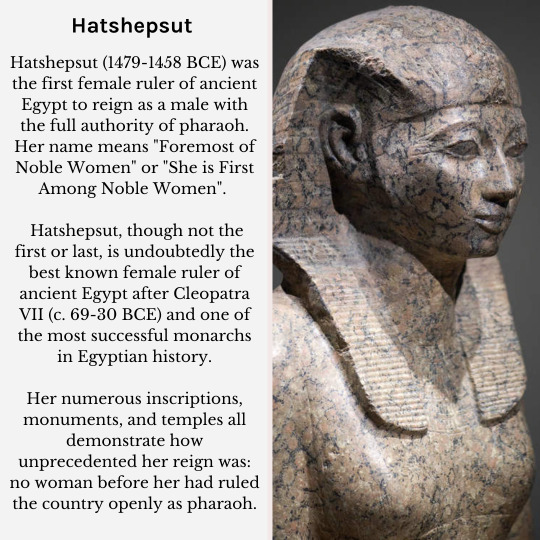



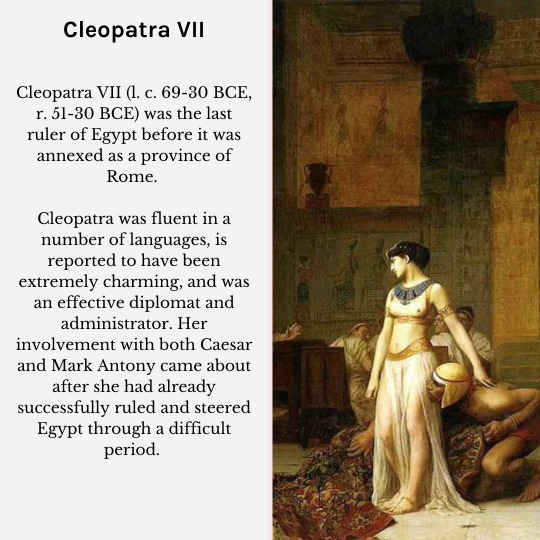





HAPPY International Women's Day!
Here are some strong, inspirational women from history!
906 notes
·
View notes
Text
Hello fans of Re: Dracula who were introduced to fiction podcasts through the updates from our good friend Jonathan Harker! Now that the story's over (sob!), would you like some recommendations for some other audio dramas that you might enjoy, made by some of the folks who worked on the podcast?
Jonathan Sims, who played our local phonograph enthusiast, is the writer of the hugely popular horror podcast, The Magnus Archives. The Head Archivist of the Magnus Institute records statements made by members of the public, detailing strange encounters with the supernatural. What soon becomes clear is that these statements do not describe separate and unrelated events, and a bigger and horrific picture begins to emerge. Also appearing as recurring characters in this series are both Sasha Sienna and Alasdair Stuart.
Karim Kronfli is a prolific voice actor, and while he might be best known for his roles in both Re: Dracula and The Magnus Archives, he has voiced a wide range of characters in many different fiction podcasts. Out of all the ones he's appeared in, I would personally recommend urban fantasy anthology series, Unseen. The unseen world exists alongside ours, but only a few humans can see it. It's a world where magic and magical creatures exists, and Karim's character tells his story in episode 7, titled We Ourselves.
Beth Eyre and Felix Trench played twins Antigone and Rudyard Funn in Wooden Overcoats, a British sitcom set on the tiny fictional island of Piffling, in the English Channel. The twins run a funeral parlor together, the only one on the island, until a newcomer arrives. Eric Chapman (played by Tom Crowley) sets up a much more successful funeral parlor, and the story is narrated by the Funns' house mouse, Madeline.
Alan Burgon plays the Interviewer in The Amelia Project. The Amelia Project is a secret organisation, and clients come to them looking for their help in faking their deaths. The Interviewer listens to each client's story, before concocting unique and often elaborate ways in which they will stage their deaths, before being reborn into a new identity.
David Ault is also a very recognisable voice to anyone who spends a considerate amount of time listening to fiction podcasts, and The Kingmaker Histories feels like an appropriate choice here. A weird steampunk series set in the Valorian Socialist Republic in 1911 , this story involves found family, its own intriguing magic system, and being gay and doing crime.
Our favourite cowboy, Giancarlo Herrera, plays one of the protagonists in sci-fi action/thriller, Primordial Deep. Spinner is part of a team which is sent deep beneath the sea to investigate the resurgence of creatures thought to be long-extinct. There's plenty of horror to be had here, as something ancient is stirring in the depths of the ocean.
As for the crew? Tal Minear works on so many podcasts, and if you like fantasy stories, I would recommend the delightfully lighthearted Sidequesting, which follows new adventurer Rion, as they help people on their travels. If you would like some more horror, there's their spoiler-driven anthology series, Someone Dies in This Elevator.
Hannah Wright's Inn Between is a fantasy series based on D&D. Each episode follows a party as they meet in the Goblin's Inn, in between adventures, as the tavern follows them around wherever they go.
Stephen Indrisano's upcoming docu-horror Shelterwood promises to be a series which explores the horror of suburbia, as it follows one man's quest to find his missing sister. Until this is released, I would recommend Do You Copy, in which Stephen plays one of the protagonists. This found footage horror series follows the events which unfold after the closure of Red Tail National Park, and the people who were left inside the park, after its mysterious closure.
Ella Watts is regarded as a walking encyclopedia of all things audio fiction, and has worked on several high-profile projects, including directing both Doctor Who: Redacted and Marvel Move. Her upcoming Camlann is a post-apocalyptic series due to be released next year, inspired by Arthurian legends and British folklore. She is also the executive producer of Tin Can Audio's (who are also producing Camlann) beautiful experimental series, The Tower. The protagonist of this story, Kiri, leaves her life behind to climb an impossibly high tower, making phonecalls along the way.
Newt Schottelkotte's Where The Stars Fell is a supernatural fantasy set in the town of Jerusalem, Oregon. Cryptozoologist Dr Edison Tucker arrives in the town to carry out some research, and meets her roommate, author Lucille Kensington. There's so much more to this strange town than first meets the eye, with a huge revelation at the end of season one.
If you're new to fiction podcasts, welcome! I hope this short (ish!) and very much non-comprehensive list gave you some ideas of what to listen to next!
#Re: Dracula#audio fiction#audio drama#podcasts#podcast recommendations#podcast recs#the mortifying ordeal of being known WELP#me yeeting this list into the void and then disappearing for the forseeable future
472 notes
·
View notes
Text
Misunderstanding
I received a note from someone who was upset I “failed to cite Scott McCloud’s Understanding Comics” in my research for my work on Neil Gaiman's Chivalry and the essays I wrote about it.
I really appreciate that people want to make sure credit goes where it's due, and I have a lot of respect for Scott McCloud's accomplishment with his wonderful book.
I haven't read it myself in some years, and didn't cite it in my articles because I didn't reference it. I don't even know where my copy is so I don't know what McCloud referenced, either.
The information in my articles re: illuminated manuscripts and the Bayeux Tapestry, as well as other theories about the development of sequential art from prehistory, not only predate McCloud's work (and in fact, predate McCloud's birth,) but they are so common and so well known in comics circles that asking me to cite them seems as weird to me as asking me to cite the information that George Washington was the first President of the United States.
A part of me wonders if someone is trying to play, "Let's you and him fight."
No.
But I’m happy to bring to your attention some reading material.
Stephen Becker in his 1959 work Comic Art in America: A Social History of the Funnies, the Political Cartoons, Magazine Humor, Sporting Cartoons, and Animated Cartoons was among the first to discuss the Bayeux Tapestry as comic art. I read that book sometime in the 1980’s. I think a lot of people assume the Bayeux tapestry as comic art was McCloud’s idea, but we don’t all walk around with a reference library in our heads, so there you go. I can’t find my copy of Becker’s work to quote, but I did find an article by Arthur Asa Berger with a mention of the Bayeux Tapestry as comic art in the summer 1978 issue of The Wilson Quarterly.

My first exposure to the idea of comics as descendant of fine art was Maurice Horn’s 1976 The World Encyclopedia of Comics which was my first read re: comics history. I still have my tattered 1976 edition.
While Horn scorned the idea that tapestries and manuscripts could be comic art (see, it was a matter of discussion way back then, so much so that authors were writing snarky asides to one another about it,) he believed the origin of sequential art was in the Renaissance sketches of Leonardo da Vinci - which I think everyone now agrees is kind of a bonkers idea.

I think Horn was just intent on elevating the comic art form by hooking up with da Vinci.
You go, boi.
Comics as descendant of art on scrolls is a very common theory, the easiest to trace being in Manga! Manga! The World of Japanese Comics by Fred Schodt published in 1983 when I was still a teenager. I can't find my copy to show examples, but this text is still in print and you can go read it for yourself.
I was introduced to manga by cartoonist Leslie Sternbergh and bought Schodt’s book at Books Kinokuniya on (I think) a trip to New York around the time of first publication of Schodt’s work. And years later took a trip to Japan with Fred Schodt and a group of cartoonists including Jeff Smith and Jules Fieffer, Nicole Hollander, and Denys Cowan as the guests of Tezuka Productions.
Here we all are.

So, I’m familiar with manga, see.
As for comics as descendant of cave paintings, hieroglyphics and ancient art in general, Will Eisner’s 1985 Comics and Sequential Art not only made all of those points, but made those points with comic art examples. Like these.

And this.

And this.
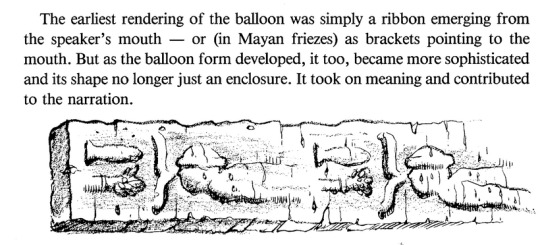
And more than a few words on this:


I find it amusing that someone is questioning why I didn’t cite McCloud when what you should probably be questioning is why more people don’t cite Eisner who produced his book eight years before McCloud published his and who is well known to have influenced McCloud.
Whatever. My book's autographed.
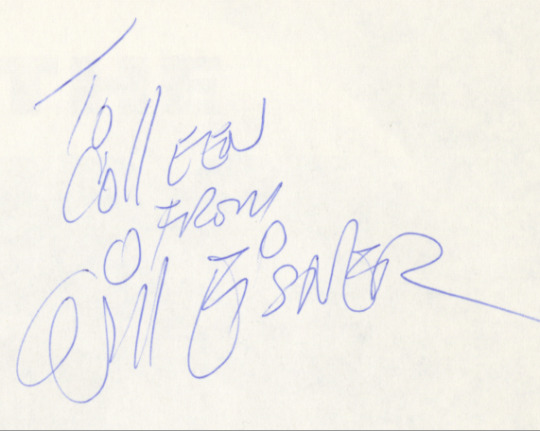
I also danced with Eisner. Eat your heart out.
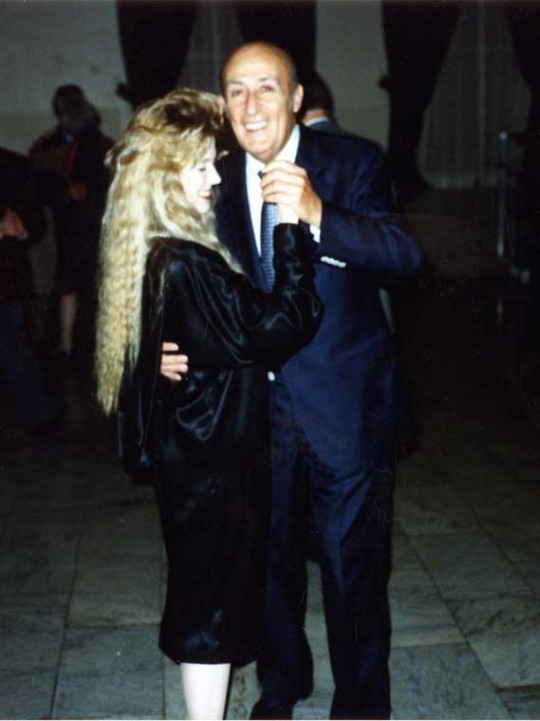
Understanding Comics is a terrific work with huge advantages over every book (that I know of) about comics that came before: it taught comics entirely in the language of comics.
But the discussion in it about the origins of comics and my work especially re: illuminated manuscripts/tapestries, did not originate with McCloud. I research illuminated manuscripts because it’s my hobby and it informs my art.
I encourage everyone to read Understanding Comics because it is an outstanding work.
But it’s not the book that introduced me to the concepts of the development of comic art. It’s not even the point of origin of those concepts. So, there is no reason to cite it.
Also, shocking as it may seem, I occasionally come up with ideas on my own. While I'm younger than McCloud, I've actually been a comics pro longer than he has. So I've had plenty of opportunity to, you know, read things and toss things around, and decide for myself.
When I first read Chivalry and first begged Neil Gaiman to let me adapt it, my head full of the work of Alberto Sangorski and his art for Tennyson’s Le Morte D’Arthur, Understanding Comics hadn’t been published yet.
It's been a good twelve years since I last read McCloud's work, and I don't think I've spoken to him five times in the last three decades. But I'm pretty sure he never mentioned Sangorski.
I hope that clears everything up, and maybe introduces some of you to some works you might not be aware of.
Have a great day.
#understanding comics#comics history#neil gaiman#scott mccloud#chivalry#jules fieffer#tezuka productions#manga#will eisner
2K notes
·
View notes
Text
The Florentine Codex is the first Indigenous encyclopedia of the New World, a manuscript that documents the culture, politics, natural science, and history of the Mexica (Aztec).
After seven years, with contributions from specialists from around the world, the Digital Florentine Codex is now available. This new tool unlocks a wealth of Mexica history and culture with new translations and features.
Start exploring:
452 notes
·
View notes
Text
I swear I adore Obey Me and it's characters, but I hate how little information the devs give us about the Devildom/other realms, like, I'd like to know what a standard demon ethic is, maybe a bit about the law too, what other magical items exist even if they aren't necessary for the plot, how strong could a demon/angel get, more about the different cultures of both angels and demons (more than sweets/food that is, there's gotta be more, c'mon), maybe a map about the Devildom, it'd be nice to know how far things are from each other and not have to guess.
I sometimes wish that Obey Me had an encyclopedia or something to know this little details about how the different worlds function, perhaps including it in-game as a new feature would be nice. This could also give the MC a deeper understanding of what they've gotten into, because I can't believe they even went to the past without knowing at least basic history (more than the Celestial war, it is known that demons and angels had beef waaaaay before that).
#obey me#obey me shall we date#obey me devildom#obey me celestial realm#obey me simeon#obey me belphegor#obey me mammon#obey me lucifer#obey me satan#obey me beelzebub#obey me diavolo#obey me barbatos#obey me luke
196 notes
·
View notes
Note
What counts as a spell? Is intent all you need or do you have to do something before to get it all juicy and stuff.
Hi Anon! What a fun question, because there is no answer except this CAN OF WORMS you just opened.
There is no consensus anywhere as to what constitutes a "spell."
There is even LESS consensus as to what makes a spell go.
Intent is a good starting place. It is probably where you should start for all acts of practical magic.
But I find that in it's common form, the idea of intent + willpower = magic has been diluted past the point of utility for most people.
Like if we're talking about "intent is everything" I'm reminded most closely of Chaos Magic. But Chaos Magic is not a school of "just set your intent and you've worked magic!". It's a very rigorously developed system.
In Hine's Condensed Chaos, he lists the third Core Principal of Chaos magic as technical excellence, and I quote:
One of the early misconceptions about Chaos Magic was that it gave practitioners carte blanche to do whatever they liked, and so become sloppy (or worse, soggy) in their attitudes to self-assessment, analysis, etc. Not so. The Chaos approach has always advocated rigorous self-assessment and analysis, emphasized practice at what techniques you're experimenting with until you get the results you desire. Learning to 'do' magic requires that you develop a set of skills and abilities and if you're going to get involved in all this weird stuff, why not do it to the best of your ability?
Later in the book, Hine likens "magical powers" to the concept of achievements, and goes on to say:
Something which is an achievement is the result of practice, discipline, and patience.
Shortly after:
Chaos Magic is not about discarding all rules and restraints, but the process of discovering the most effective guidelines and disciplines which enable you to effect change in the world.
(In above quotes, all emphasis my own)
But these ideas get taken - and I'll give a big nod to the LOA which is just the worst kind of brainrot for encouraging the "intent is all that matters" mindset - and the ideas get diluted so much that people are literally out here saying, "so all those people who spend years studying magic in order to get results are buffoons? All I have to do is imagine what I want and it will be delivered to me? All humans since the start of history just have to decide they want something and it will happen in a miraculous manner?"
(Not you, Anon. I'm just in a mood)
In my mind, yes - something beyond intent must occur in order to make spells go.
But what?
Anon, have you ever heard that dumb belief floating around that all herbs in a spell can be replaced by rosemary, and all stones in a spell can be replaced by clear quartz, and these two things are "universal substitutes"?
I am 95% sure that this nonsense was based on two very popular dictionaries Cunningham wrote in the 80s, the Encyclopedia of Crystal, Gem & Metal Magic, and Encyclopedia of Magical Herbs.
In the very long entry for Clear Quartz:
Quartz crystal is used as a power amplifier during magic. It is worn or placed on the altar for this purpose.
And from Rosemary:
Rosemary is generally used as a substitute for frankincense.
And I believe that someone somewhere got the idea that since clear quartz amplifies all other powers, it therefore somehow magically Ditto-copies all other powers, and like a shapeshifter somehow becomes something it is not nor ever was.
And, you know. What's the difference between subbing out frankincense and blackthorn between friends?
These beliefs have become so popular that sometimes when unscrupulous blogs rip off entire Cunningham encyclopedia entries and paste them into tumblr posts (without credit), THEY INCLUDE THE EXTRA MADE-UP BIT ABOUT ROSEMARY BEING A UNIVERSAL SUBSTITUTE.
Anon, your question is "is it just intent or do we need other stuff to make it go," but sadly,
IMO common beliefs about the stuff that makes spells go have also been diluted past the point of utility for most people.
Because if I sat here and said, "hey Anon, it's not just intent, you also have to use correspondences ^-^/" then the very first thing you are likely to run into is absolute nonsense about correspondences. IMO, effective utilization of correspondences is a skillset based in research, theory, and technique.
Or if I said, "you also have to raise energy! 👍", this may be mistaken to mean, "set intent but also visualize white light inside of a candle," because the concept of raising energy and visualizing has been (IMO) diluted past the point of utility for most people. I believe that effective utilization of energy work is a song composed of many notes and chords, several of which you must practice before you can utilize it.
And to complicate all of this, which non-diluted things in which combinations you need to make the spell go depends on what paradigm you operate off of, because while there are approximately one billion ways to do magic that works, my currently very dim worldview is that most people who are talking about magic are doing magic that doesn't work,
and in my opinion the actual basis and reasoning, like the rationality behind the magical systems is really important. Because you need that shit to understand what it is within that system that makes the spell go.
And you need to understand what makes the spell go to make the system fit into your life without breaking it, and in order to troubleshoot problems without making things crumble further.
Because when people don't understand the basis and reasoning you end up with "rosemary is a universal substitute" and "imagining white light makes the spell go."
There are a few circumstances where you can totally strip technique from theory and be successful, but there are also a hell of a lot of people out here feeling shit about their practice because their spells never seem to work.
So.

I really just recommend choosing what school of magic you would like to learn about and participate in, and reading an introductory book on it.
This is because it is the job of introductory books to explain the principles and theories behind a system of magic, and most importantly, what makes the magic go, and a step-by-step primer on what you, the practitioner, are supposed to do to make that kind of magic go.
Despite above rambles I'm really not a Chaote, so I can't recommend a strong primer. As far as I'm aware, Liber Null & Psychonaut by Peter J. Carroll is a core text.
For Traditional Witchcraft, try The Crooked Path by Kelden.
For something more Wiccan, I can't recall having anything bad to say about Psychic Witch by Mat Auryn.
If either of these things are too Witchcrafty for you, try Six Ways by Aidan Wachter, which is still witchcraft, but it hits different.
For a general primer on helping your spells go, try Elements of Spellcrafting by Jason Miller.
175 notes
·
View notes